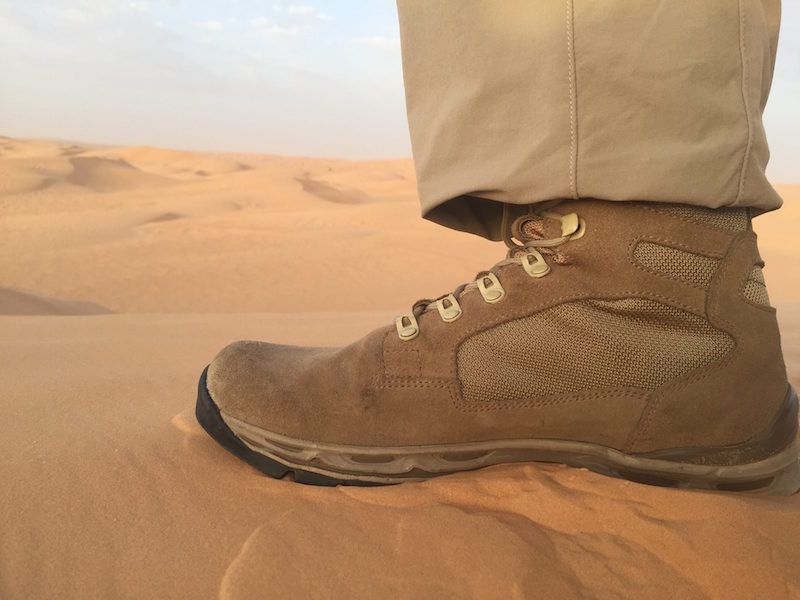Get the weekly SPARTANAT newsletter.
Your bonus: the free E-Book from SPARTANAT.

REVIEW: Meindl Equator Prototype
Gore-Tex boots for hot climates are now a reality thanks to innovative technology presented by Gore at the IWA in 2015. The Meindl Equator, part of the GORE-TEX® Extended Comfort product portfolio, offers exceptional breathability and waterproofness, making it ideal for extreme environments. Our extensive testing on three continents confirms its superior performance and comfort.
Gore-Tex boots for hot climates? It's possible! Gore already presented its current concept for Desert Combat Boots at the IWA in Nuremberg in 2015. The core of the boots are newly developed GORE-TEX® Extended Comfort Laminate. They are not only permanently waterproof, but also extremely breathable. Thus, they are tailored to the specific requirements of hot operational environments and high physical stress. Depending on the specific scenario, there are three types of shoes to choose from the GORE-TEX® Extended Comfort product portfolio:
- High Liability boots are ideal for multi-day missions, difficult terrain, and heavy loads: Equipped with the highly breathable laminate, these boots offer increased stability and necessary support.
- Tactical GORE-TEX® Extended Comfort Footwear represent lightweight, agile, and climatically comfortable boots: they are ideal for shorter missions with lighter loads in warm and hot climates, without sacrificing permanent waterproofness.
- For highest demands on breathability, the Patrol boots are ideal. They use an extremely breathable 3-layer laminate (Ret < 6) for the first time without a separate inner lining - in contrast to typical military boots with membranes. Due to this construction, they absorb hardly any water, dry quickly, and weigh less than 600 grams per boot (size 42), making them extremely lightweight.
The Meindl Equator is the flagship for the Patrol GORE-TEX® Extended Footwear line: the lightweight field boot is as waterproof as it is extremely breathable. It has no insulation to prevent blocking heat exchange. The minimalist shoe design helps keep it extremely light and allows it to dry as quickly as possible if it does get wet. We at SPARTANAT have tested the Meindl Equator for you - and that on three continents.
The boot is very simple and resembles a classic canvas tropical boot. Immediately upon holding the Equators in your hands, the very low weight stands out. I wore the boots in the first few days here in Austria. And I was really surprised, since all my official boots made of full leather or leather/Gore-Tex eventually reach a point where you feel like your foot is "cooking." However, at the end of the day with the Equator, there was no heat sensation in the foot, the heat dissipation works perfectly.
SPARTANAT is the online magazine for Military News, Tactical Life, Gear & Reviews.
Send us your news: [email protected]
Ad
similar
Get the weekly SPARTANAT newsletter.
Your bonus: the free E-Book from SPARTANAT.


